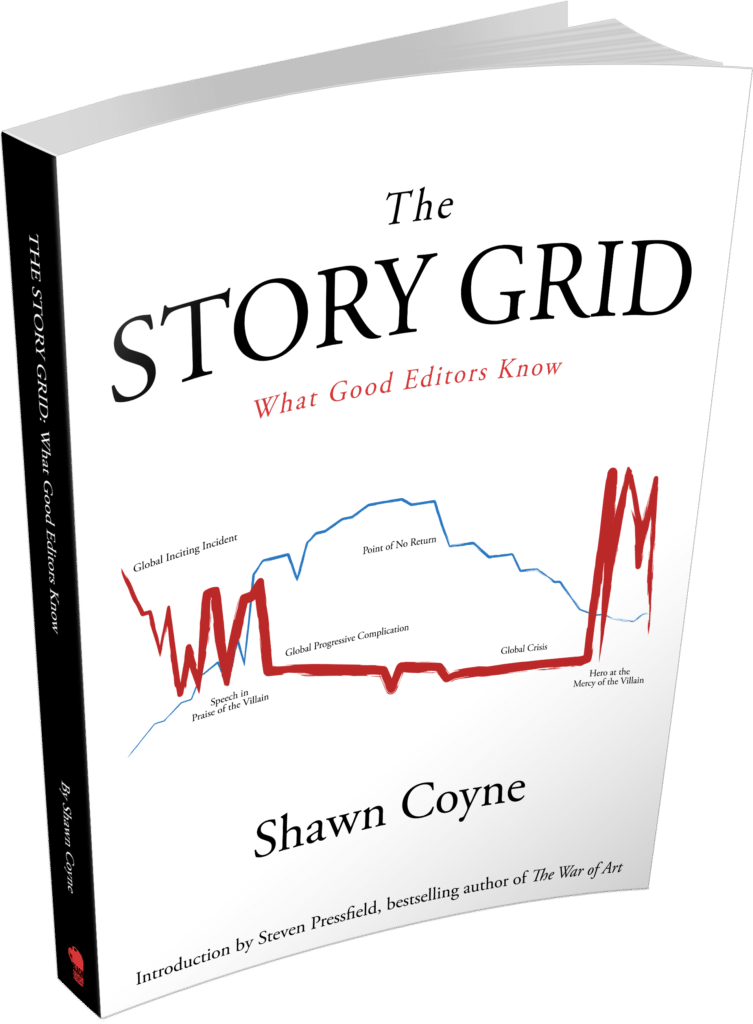
Why Study Films?
Plays are difficult to come by and comparatively expensive. A book could take a week or more to read. Films are numerous, inexpensive, and only take two hours to view. Film is the logical choice for story analysis on a large scale.Masterworks are notable examples of a genre. Even if you never want to write screenplay, examining masterwork films is useful to your understanding of how the elements of story work together. It can show you a variety of plots and variations in plot points in a short amount of time. There is no "tell" in film. You see how authors reveal character by showing and not telling.
And we can watch and analyze films completely on the internet.
How It Works
Each month the members will meet. This first meeting we will meet on the internet at a Google Hangout. Later we will likely meet at the Flagstaff Library.Participants will be randomly assigned an element of story. Worksheets based on Shawn Coyne's Story Grid will be provided. We will view the chosen film and make notes about the element we were assigned. Then we will present our findings to the rest of the group for discussion.
The goal is for the participants to internalize how successful stories work, how they are timed, plotted, where and how they turn, and ultimately how they reach their "surprising but inevitable" endings.
The person who is assigned the Plot element chooses next month's movie.
Elements of Story Worksheets


 The Story Grid
The Story Grid
- Story Grid Worksheet
- Plot
- Character Arc, Wants, Needs
- Genre, Conventions, Obligatory Scenes
- Point of View and Narrative Drive
- Theme, Symbols, Values, Controlling Idea
- Setting, Tone, Mise-en-scène
- Special Scenes
Our Next Meeting We Will Analyze

Die Hard 1988 & Night at the Museum 2006
Okay, so there is a Hollywood rumor that Die Hard was rewritten scene by scene to create Night at the Museum. I just got to know, is that for real? So we will be analyzing both movies scene by scene for similarities. Take the first half or the last half of both movies and have a go.
Watch the movies on your own and see if you can find similarities between these films. Then meet us at
2 pm
on 9/19/20
at Zoom
Join Zoom Meeting
https://zoom.us/j/99848917744?pwd=bzR3U1BUQSt3T2dNZXZTQ0ZNSk1vdz09
Meeting ID: 998 4891 7744
Passcode: Film
https://zoom.us/j/99848917744?pwd=bzR3U1BUQSt3T2dNZXZTQ0ZNSk1vdz09
Meeting ID: 998 4891 7744
Passcode: Film
Resources
 The Story Grid
The Story Grid

Background:
ReplyDeleteBeginning with Superman in 1938 comic Super Heroes have dominated the Comic Book Genre. The Golden Age of Comic Books lasted into the 1950s with Superman; Batman; Captain Marvel; Wonder Woman; Captain America. By 1954 only three superheroes survived: Superman, Batman, and Wonder Woman. DC comics revised these heroes in the 1950s and added The Flash; Green Lantern But comic book heroes still struggled. They seemed dated and frequently had a public service vibe to them.
In the 1960s Marvel comics took a new stance on the super hero creating post-modern characters like Spider-Man; Fantastic Four; Hulk; Thor;X-Men; Iron Man who featured more complex personalities which had more dramatic potential.
By the 1970s comics took on social issues and politics. In 1985 Watchmen; The Dark Knight Returnsadded an edgy darkness to the comics. Anti-heroes were added to the mix.
The Black Panther debuted in Marvel Comics in 1966.
"I came up with the Black Panther because I realized I had no blacks in my strip…I had a lot of black readers. My first friend was…black! And here I was ignoring them because I was associating with everybody else.”—Co-creator Jack Kirby
Black Panther got his own comic book in 1977.
“Black Panther's story originates in the fictional nation of Wakanda, touted in the comic as the only African country that was never colonized—though many tried. Over the years, observers have drawn real-world parallels between Wakanda and Ethiopia, which was never officially colonized, but was occupied by Italy in the 1930s. Without outside powers extracting its resources, or imposing exploitative policies, Wakanda flourishes and becomes the most technologically advanced country on earth, rich in natural resources such as the fictional element Vibranium. (Sound familiar? It's what Captain America's shield is made of.)"—History Channel
More Background
ReplyDeleteThe 2018 movie broke ticket sales records for Marvel.
“What makes the Black Panther such a significant figure in American popular culture—as well as black popular culture—is its groundbreaking representation of blackness as more than a stereotypical and racist trope of inferiority. We have to keep in mind the historical context of the superhero's first emergence—in 1966, against the backdrop of the Civil Rights and burgeoning black-power movement. That becomes important because in many ways [the emergence of a black superhero]…marks a racial transformation happening on a political and social level.”
“Wakanda symbolizes a wonderland of possibilities: What would have happened to a society not [affected] by the devastating impact of racism and colonialism? In that sense, the film is a beacon for the black imagination…what blackness could be in the future.”
“This film speaks to a broader pent-up demand and desire to see a science-fiction version of blackness that is on par with a “Star Wars.”
“[It is] such a strong allegory [of] our contemporary moment, given the way in which racial tensions—in American society in particular—have come to the forefront. Particularly in the wake of the Black Lives Matter movement and the comments by the president disparaging African nations, black football players standing up by kneeling… Against that type of backdrop, films such as "Get Out” and “Black Panther” have a vivid resonance.” — Adilifu Nama author of Super Black: American Pop Culture and Black Superheroes.
First Act: 33.8 min
Midpoint: 67.5 min
Second Act: 101.3 min
Run Time: 135 min